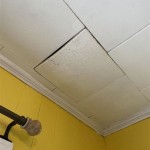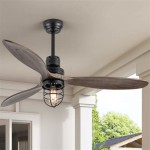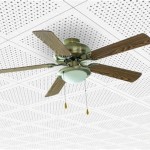How Much Does It Cost To Install a Suspended Ceiling?
Installing a suspended ceiling, also known as a drop ceiling or T-bar ceiling, is a popular choice for both residential and commercial spaces. Its benefits include concealing unsightly ductwork, wiring, and plumbing, improving acoustics, and providing easy access for maintenance. However, understanding the associated costs is crucial for proper budgeting. The overall price can vary significantly based on several factors, including the size of the space, the type of materials used, and the complexity of the installation.
A suspended ceiling is a secondary ceiling suspended below the main (structural) ceiling. It is constructed using a grid of metal channels suspended from the existing ceiling by wires. Into this grid, lightweight ceiling tiles are inserted. This creates a finished ceiling surface that is both functional and aesthetically pleasing. The space between the structural ceiling and the suspended ceiling is called the plenum, and it can house various utilities and services.
This article provides a comprehensive overview of the different elements that influence the cost of installing a suspended ceiling. It will cover material costs, labor costs, additional expenses, and regional variations to give a clear understanding of the potential investment required.
Key Factors Influencing Suspended Ceiling Installation Costs
Several key factors directly impact the overall cost of installing a suspended ceiling. These factors must be carefully considered to develop an accurate budget and avoid unexpected expenses.
1. Size of the Area: The most significant factor affecting cost is the square footage of the area where the suspended ceiling will be installed. Larger spaces require more materials and labor, naturally increasing the price. The material cost is directly proportional to the area. Estimating the square footage accurately is the first step in determining the overall project cost.
2. Type of Ceiling Tiles: Ceiling tiles are available in a wide variety of materials, styles, and performance characteristics, each with its own price point. Common materials include mineral fiber, fiberglass, gypsum, metal, and wood. Mineral fiber tiles are generally the most affordable, while metal and wood tiles are more expensive. Furthermore, tiles with specific performance attributes, such as acoustic dampening, fire resistance, or moisture resistance, often carry a higher price tag.
3. Complexity of the Installation: The complexity of the installation can significantly impact labor costs. Factors that contribute to complexity include the presence of obstructions like pipes, ducts, and lighting fixtures, irregular room shapes, and the need for custom cuts. Installations in challenging areas or those requiring intricate layouts will require more time and expertise, thereby increasing labor costs.
4. Labor Costs: Labor costs vary depending on the region, the experience level of the installers, and the complexity of the project. Hiring experienced professionals is generally recommended to ensure a proper and aesthetically pleasing installation. While it may be tempting to attempt a DIY installation to save on labor costs, improper installation can lead to problems such as sagging tiles, misaligned grids, and compromised structural integrity. Licensed and insured contractors will typically provide a detailed quote that includes labor, materials, and any necessary permits.
Detailed Breakdown of Suspended Ceiling Costs
To better understand the overall cost, it's helpful to break down the expenses into specific categories. This includes material costs, labor costs, and potential additional expenses.
Material Costs: Material costs encompass all the components required for the suspended ceiling installation. These include the grid system (main runners, cross tees, and wall angles), ceiling tiles, suspension wires, fasteners, and any necessary trim or accessories.
The grid system typically costs between $0.50 and $1.50 per square foot, depending on the quality of the materials and the complexity of the grid design. Ceiling tiles can range from $1 to $5 per square foot, with specialized tiles costing even more. Considering a mineral fiber tile as a starting point, a typical 12x12 tile can cost around $1. The same size tile made of metal can cost $3 to $5 depending on the material.
Suspension wires and fasteners are relatively inexpensive, usually adding only a small percentage to the overall material cost. However, it's important to use high-quality components to ensure the structural integrity of the ceiling. Costs are also associated with cutting the tiles to size and creating cutouts for existing fixtures. These materials are needed in small quantities but will contribute to the material expenses.
Labor Costs: Labor costs are typically the most significant expense associated with suspended ceiling installation. The national average labor cost for installing a suspended ceiling ranges from $2 to $5 per square foot. This cost can vary based on the factors. For instance, installation in a large, open space with minimal obstructions will generally be less expensive than installation in a smaller, more complex area.
The experience level of the installers also plays a role. Experienced professionals may charge more per hour, but they can often complete the job more quickly and efficiently, resulting in lower overall labor costs. It is crucial to obtain multiple quotes from different contractors to compare prices and ensure a competitive rate.
Additional Expenses: In addition to material and labor costs, several other potential expenses should be considered. These may include:
*
Demolition of Existing Ceiling:
If an existing ceiling needs to be removed before the new suspended ceiling can be installed, demolition costs will apply. Demolition can be simple, requiring minimal efforts, or it can be complex, requiring specialized equipment and waste disposal.*
Electrical Work:
If new lighting fixtures are being installed as part of the suspended ceiling project, electrical work will be required. This may involve running new wiring, installing new outlets, and connecting the fixtures. A qualified electrician should perform all electrical work to ensure safety and compliance with local codes.*
Permits:
Depending on the location and the scope of the project, building permits may be required. Permit fees can vary widely, so it's important to check with the local building department to determine the specific requirements.*
Waste Disposal:
Disposing of construction debris can incur additional costs. Some contractors include waste disposal in their quotes, while others charge it separately. It's important to clarify waste disposal responsibilities before starting the project.*
Unexpected Issues:
During the installation process, unforeseen issues may arise, such as the discovery of hidden damage or the need for additional structural support. It's wise to set aside a contingency fund to cover any unexpected expenses.Regional Variations in Suspended Ceiling Costs
The cost of installing a suspended ceiling can vary significantly depending on the geographic location. Labor costs, material prices, and permit fees can all fluctuate from one region to another. Areas with a higher cost of living typically have higher labor rates and material prices. Metropolitan areas often have higher costs compared to rural areas. Supply and demand also influence prices. Regions with a high demand for construction services may see higher prices due to limited availability of contractors. Conversely, regions with lower demand may have more competitive pricing.
Checking and comparing costs from a few different locations is recommended before moving forward with installation. Doing so will provide you with a more accurate assessment of potential expenses.
Cost Estimations Based on Space Size:
To provide a more concrete understanding of potential costs, let's consider a few hypothetical scenarios based on different space sizes:
*
Small Room (100 square feet):
For a small room, such as a home office or a small bathroom, the material costs might range from $150 to $500, depending on the type of ceiling tiles chosen. Labor costs could range from $200 to $500. The total cost could be between $350 and $1000.*
Medium-Sized Room (400 square feet):
For a medium-sized room, such as a living room or a bedroom, the material costs might range from $600 to $2000. Labor costs could range from $800 to $2000. The total cost could be between $1400 and $4000.*
Large Space (1000 square feet):
For a large space, such as a basement or a commercial office, the material costs might range from $1500 to $5000. Labor costs could range from $2000 to $5000. The total cost could be between $3500 and $10,000. The final price point depends on the type of tile selected and the complexity of the installation process.These are just estimates, and the actual costs may vary. Obtaining quotes from local contractors is essential for a more accurate assessment.

How Much Does It Cost To Install A Drop Ceiling 2025 Data

How Much Does A Drop Ceiling Cost In 2025 Homeguide

Woodtrac Ceiling System Review Upgrade Your

How Much Does A Suspended Ceiling Cost In 2025 Checkatrade

Cost To Install A Suspended Or Drop Ceiling 2024 Diy Not
How To Install Drop Ceilings Easy Guide Kanopi By Armstrong

Drop Ceiling Cost Suspended Fixr

How To Install A Drop Ceiling 14 Steps With S Wikihow

How Much Does A Ceiling Installation Cost In 2024

Drop Ceiling Cost Suspended Fixr
See Also








